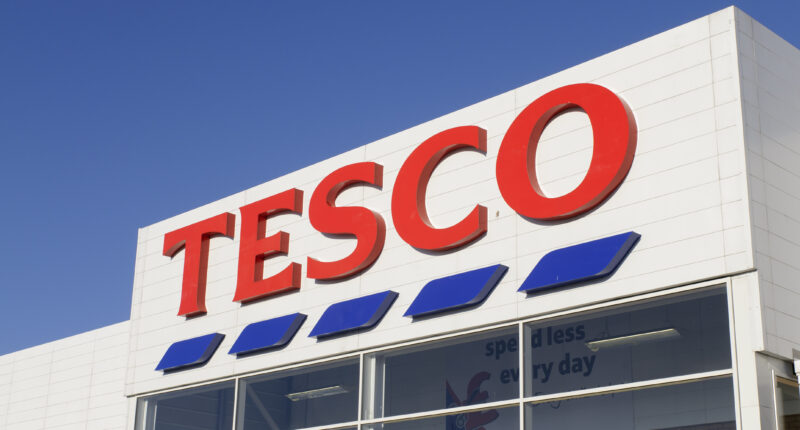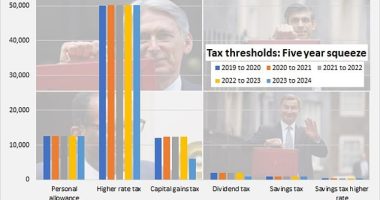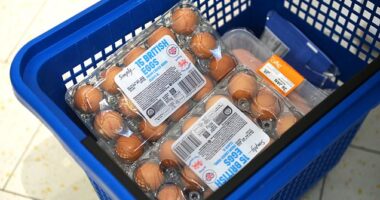TESCO’S boss has given a major update on food prices and how it affects shoppers.
The supermarket’s boss has said there are “encouraging early signs that inflation is starting to ease” after shoppers faced soaring food prices.
The UK’s rate of inflation fell to 8.7% in April, but the annual rate for food prices only dropped to 19.3% down from 19.6% in March 2023.
But this doesn’t mean that prices are falling, instead they are just rising just at a slower rate.
Food price growth is at the second highest level seen for over 45 years, when food inflation hit 21.9% in August 1977.
Supermarkets have been criticised in recent months for doing little to help customers with the cost of living.


Chancellor Jeremy Hunt said off the back of the figures of inflation that the cost of supermarket staples remained “worryingly high”.
Recent analysis by Which? has also highlighted how poorer families are being hit the hardest because supermarkets are hiking the price of their cheapest grocery ranges faster than other products.
The cheapest budget ranges were up by 25% last month compared to a year ago.
Ken Murphy, chief executive of Tesco, stressed that customers “continue to face significant cost-of-living pressures” but provided further optimism that rampant food inflation could have passed its peak.
Most read in Money
In recent weeks, supermarkets have begun slashing the cost of various food staples.
For example, most grocery giants have now slashed the price of milk.
Tesco was the first to reveal that shoppers could save either 10p or 5p on its own brand four-pint, two-pint or one-pint bottles.
Its four-pint milk has also dropped by 10p, from £1.65 to £1.55.
While its two-pint of milk bottles will drop from £1.30 to £1.25 and its one-pint bottles to 90p from 95p.
Sainsbury’s soon followed suit and said milk will cost £1.55 for four pints, £1.25 for two pints and 90p for a pint.
Aldi, Asda, M&S and Lidl also cut their milk prices in recent weeks.
Tesco reported today total sales of £14.8 billion for the 13 weeks to May 27,
Its UK division saw a like-for-like sales rise of 9% after it said it saw benefits from customers switching “from premium retailers” amid pressure on consumer budgets.
Ken Murphy said: “We are pleased with our performance in the first quarter, underpinned by our relentless focus on value.
“Customers continue to recognise our leading combination of great value and quality in every part of their basket – from essentials covered by our Aldi Price Match, through to our growing Finest range.
“We are very conscious that many of our customers continue to face significant cost-of-living pressures and we have led the way in cutting prices on everyday essential items.
“There are encouraging early signs that inflation is starting to ease across the market and we will keep working tirelessly to ensure customers receive the best possible value at Tesco.”
How can I cut my grocery costs?
Signing up for a supermarket loyalty card can often help you to get cheaper prices on essentials.
If you have a loyalty card, you may find you can get extra points or discounts, particularly if you buy petrol from the same supermarket.
But it’s worth comparing loyalty schemes – and remember you don’t have to stay loyal, despite the name.
Households can save up to £1,000 a year thanks to the exclusive deals offered to loyalty cardholders.
Shoppers should also take note of unit pricing.
Unit prices are meant to make it easier for shoppers to compare similar items of different sizes.
You should be able to see the unit price of the product where its price tag is shown – it may be in small print.
Compare this with the unit price of a similar item – for example, the cost per 100ml or two different types of cola – and choose the item with the lowest unit cost.
Heading to the shops when products are marked down and bright yellow discount stickers are applied can also save you serious dough.
If you shop in the evening, you are more likely to find goods that have been marked down.
But each branch of a supermarket will have its biggest discounts at slightly different times of the day.
Ditching items with labels like “finest” in favour of “own” or “value” can be worthwhile.


You can also try checking frozen alternatives to fresh fruit and vegetables and looking on the lower shelves where customers are known to find better deals.
Households can save up to £800 a year by buying cheaper own-brand groceries.









